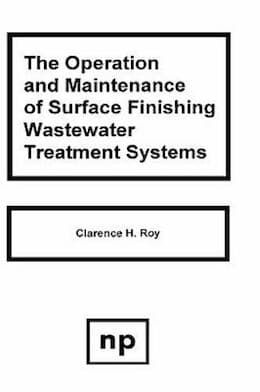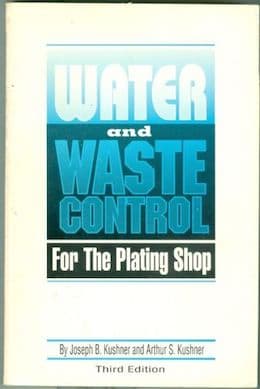
Curated with aloha by
Ted Mooney, P.E. RET

The authoritative public forum
for Metal Finishing 1989-2025

-----
Need information about silver plating industry effluent
Q. I am doing ME project on recovery of silver from electroplating industry using polymer inclusion membrane. The concentration of silver may vary for different industries. I need information about effluent characteristics and discharge standards for silver plating industry. Could anyone send to me?
Regards,
b. saravanan BCentre for environmental science, Anna university. - Chennai, tamil nadu, India
2004
by Clarence Roy

on AbeBooks
or eBay or
Amazon
(affil links)
A. You know, I did a google search on the subject and got over 2000 hits. And you expect us to do your work for you?!

James Totter, CEF
- Tallahassee, Florida
2004
A. Hi saravanan. A quick hint that might help you get started is that at least 95 percent of all silver plating is done from standard cyanide-based silver plating solution, and the same formula has been used for over a century. No one has invented a general purpose silver plating solution that is not cyanide-based and which is reliable and versatile enough for truly widespread application yet. Ion exchange and electrolytic recovery are the primary recovery technologies presently employed for silver plating installations.
Conditions vary too much in the plating industry for us to be able to summarize or generalize on silver plating effluent volume or concentration though. There have been dozens of U.S. EPA studies on industrial wastewater; although nobody in industry ever uses this product of corporate welfare (beltway bandits make large political donations and are then rewarded with grants to "study" stuff that has already been studied to death), but it may be useful for your studies :-)
Good luck.

Ted Mooney, P.E.
Striving to live Aloha
finishing.com - Pine Beach, New Jersey
2004
Silver wastewater treatment
Q. Trying to find an efficient and effective means to treating silver in wastewater.
Synjon Smythplaters - Washington DC
2006
by Kushner & Kushner

UTL on eBay
UTL on AbeBooks
on Amazon
(affil links)
A. I'm assuming you do standard cyanide silver plating.
1) Use a static rinse that you continually plate out of. This will minimize the loading on your flowing rinse waste treatment, as well as giving you a salable by product.
2) Plan on a bit more residence time in alkaline chlorination than you would for other cyanide rinses. I'd recommend 75 - 90 minutes. Silver cyanides are amenable to chlorination, but less so than zinc, cad, or copper cyanides.
3) Do polishing with a sulfur based treatment chemical, like sodium sulfide, DTC, or TMT. You will likely need to use a coagulant like alum or polyaluminum chloride with this. You will also need to do some bench testing to optimize the dosage of these, and to determine the optimum treatment pH.
Good luck!

Dave Wichern
Consultant - The Bronx, New York
2006
A. Ion exchange can be used to recover the silver. For relatively small waste water streams, the typical approach would be: Rent two or three ion exchange columns, treat the rinsing water of the plating line until the exchange resin is exhausted and have the resin regenerated externally.
At a typical concentration of silver in the rinsing water (say 5 - 50 mg/l), the value of the silver should cover -/+ the expenses of renting the cartridges with ion exchange resin.
In some cases, the rinsing water can be reused after ion exchange treatment.
Best regards,
- Gent, BELGIUM
2006
2006
A. Ion exchange will work, certainly. You can capture the Ag(CN)2[-] on an anionic resin. But, now what?
People who regenerate IX bottles off site will probably not accept them because of the cyanide. You could regenerate with a potassium hydroxide solution, a potassium cyanide solution, or a combination of the two. Then, you would have to concentrate the spent regenerant somehow and add it back to the bath. If you do this with heat at ambient pressure, you are liable to wind up with a lot of carbonates.

Dave Wichern
Consultant - The Bronx, New York
A. If you have a static tank and merely want to drop out the silver, you could let it plate out by adding some copper, plumbing pipe for example.
Regards
Ship Repair - Plymouth UK
2006
Q, A, or Comment on THIS thread -or- Start a NEW Thread